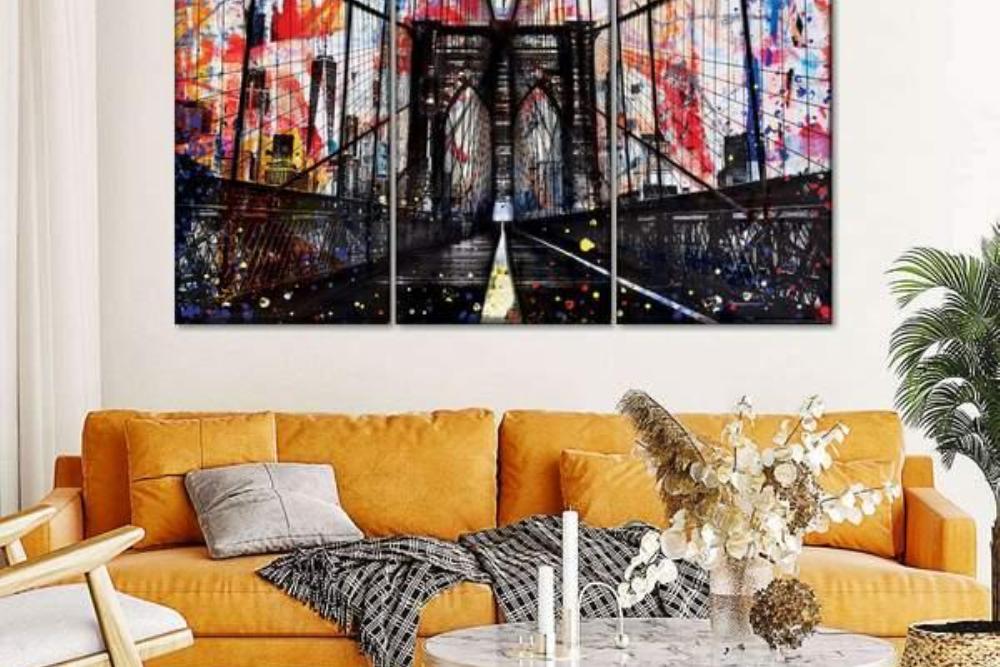
Graffiti art, often considered a form of self-expression and social commentary, has a long and rich history that spans across cultures and time periods. What is sometimes considered vandalism is now recognized in some places as a legitimate art form, with talented artists creating stunning murals and pieces that adorn walls and public spaces worldwide.
Origin and Evolution
Graffiti art's roots can be traced back thousands of years to ancient civilizations, where early humans left their marks on cave walls as a form of storytelling and communication. The modern form of graffiti as we know it emerged in the late 1960s and early 1970s in urban centers like New York City and Philadelphia. Pioneered by street artists who sought an alternative to the traditional art world, graffiti quickly gained momentum as a way for marginalized communities to express their creativity and voice their concerns.
Notable Graffiti Artists
Over the years, graffiti art has produced numerous influential artists who have left an indelible mark on the art world. One of the most famous graffiti artists is Banksy, an anonymous street artist from the United Kingdom known for his politically charged and thought-provoking pieces. Banksy's works have garnered international attention and can be found on walls, buildings, and even museum exhibits. Other notable graffiti artists include Jean-Michel Basquiat, Keith Haring, and Shepard Fairey, all of whom have used their art to challenge societal norms and advocate for social justice.
Legal vs. Illegal
Graffiti art exists in a unique space where the line between legality and illegality can be blurred. While some cities have embraced street art and even commissioned artists to create public murals, other places strictly prohibit graffiti on public or private property. This duality has sparked debates about the nature of graffiti as art versus vandalism. Advocates argue that graffiti provides a platform for artists, while opponents see it as a form of property damage. As a result, many graffiti artists operate in a constant dance between expressing themselves creatively and facing the consequences of their actions. You can now make constructive and creative photo prints for home décor using the original idea of graffiti arts.
Styles and Techniques
Graffiti art encompasses a wide range of styles and techniques that continue to evolve with the times. Tags, the simplest and most common form of graffiti, consist of an artist's signature or pseudonym painted in a distinctive style. Throw-ups are larger, quicker works with more stylized letters, often completed in one or two colors. More complex pieces, known as murals or pieces, feature elaborate designs, characters, and intricate lettering. Street artists may also experiment with stencils, stickers, wheat-pasting, and 3D techniques to create eye-catching and innovative works.
Global Impact
Graffiti art has a significant global impact, with artists from different countries and cultures contributing to the collective narrative of street art. From the colorful murals in the streets of Brazil to the politically charged works in the Middle East, graffiti reflects the unique histories and perspectives of diverse communities. Some cities, such as Berlin and Melbourne, have become renowned for their vibrant street art scenes, attracting visitors and artists alike. The global reach of graffiti has also facilitated cultural exchanges and collaborations among artists from different backgrounds, fostering a sense of unity and understanding.
Preservation and Commercialization
While graffiti art is often associated with its ephemeral nature, there has been a growing interest in preserving and documenting this form of art. Some cities have established designated graffiti zones or legal walls where artists can freely create without fear of prosecution. Additionally, organizations and galleries now curate graffiti art exhibitions and even auction pieces, recognizing the value of these artworks in the contemporary art market. However, the commercialization of graffiti has also raised concerns about authenticity and the potential dilution of its rebellious spirit.
Graffiti art is a captivating and complex art form that has captured the imagination of people around the world. From its humble beginnings as a form of urban expression to its recognition as a legitimate art movement, graffiti continues to challenge conventions and spark meaningful conversations about art, society, and identity. As this dynamic art form evolves and and graffiti art supplies become more readily available worldwide, it will undoubtedly leave an indelible mark on the cultural landscape for years to come.
EDITORIAL POLICY
Editorial Policy: The Flash List is dedicated to providing trustworthy editorial content by maintaining strict ethical standards, journalistic integrity, and credible professionalism regardless of any remuneration as working media. The Flash List is not affiliated with third-party companies mentioned and makes no endorsement or guarantee expressed or implied. The preceding article is intended for informational reference only, and does not constitute advice of any kind. Moreover, a qualified professional should be consulted regarding any lifestyle consideration, medical treatment, or monetary transaction, etc. Content contains affiliated link(s) for which compensation was received in accordance with USFTC regulations and terms and conditions.
MORE ON THE FLASH LIST
































